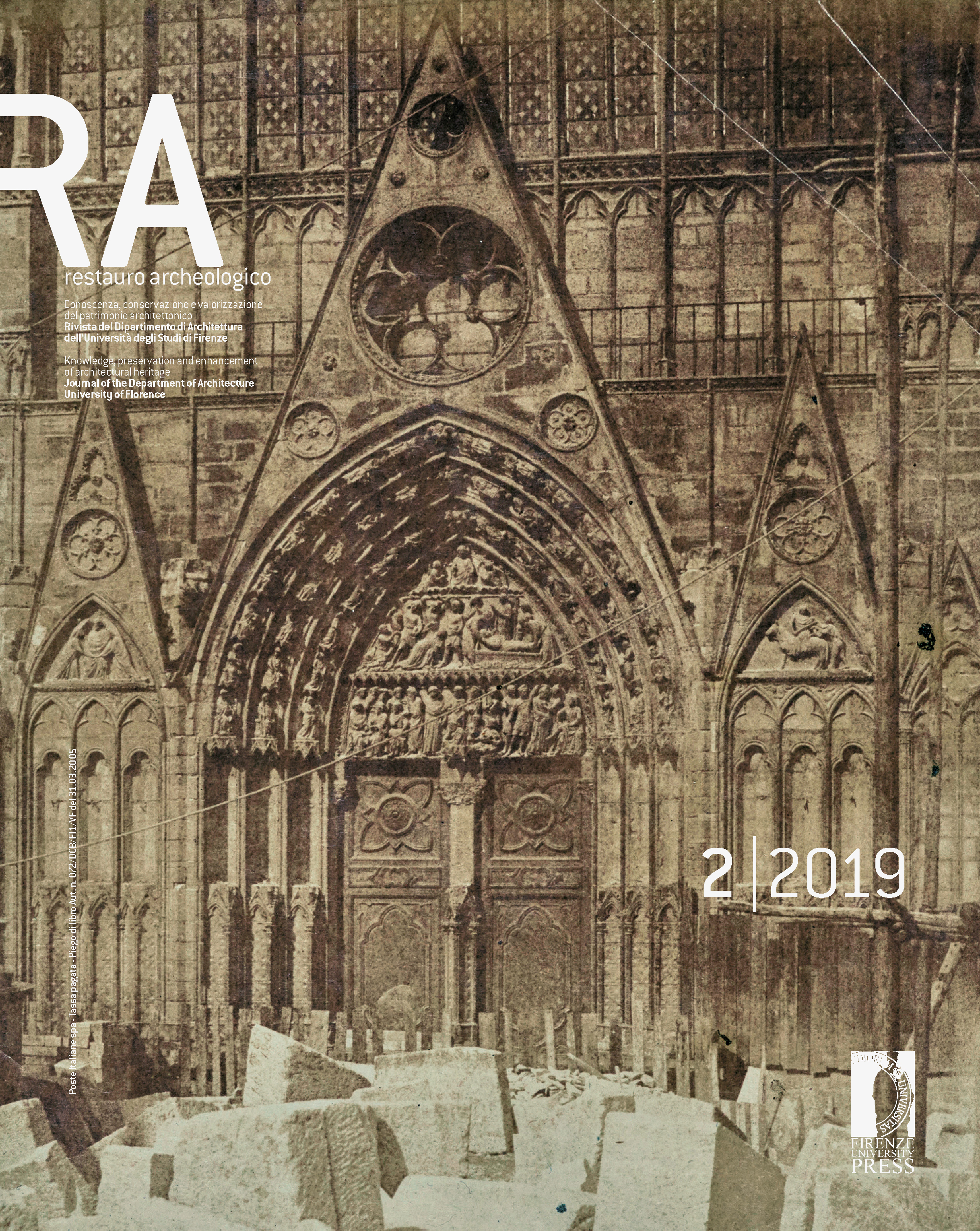Veritas e Imagines. Piranesi e la natura ambigua del triglifo nella logica funzionale della trabeazione dorica
Published 2020-07-13
Keywords
- Piranesi,
- Mimesis,
- primal hut,
- triglyph,
- doric
How to Cite
Abstract
In the eighteenth century, experiences and pressures converged on the Doric that were
the result of rediscoveries and of more or less analytical studies, but together with
stylistic questions linked to the evolution of proportions over time there was a practical
requirement for empirical understanding of the forms followed by Piranesi. In his ‘Della
Magnificenza’, the architect aimed to investigate the functionality of some of the order’s
basic articulations, not by chance focusing on the texture of the horizontal elements
and the effective tectonic coherence of the crucial triglyph, which was regarded as the
their formalised memory. The ambiguous nature of the triglyph is confirmed by the
sensational truth of its origin. In the epiphany of this revelation, mimetic realism finds,
unexpectedly, its most lucid and surprising representation and an extremely logical
correspondence between ‘veritas’ and ‘imagines’.


